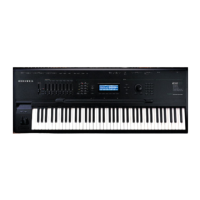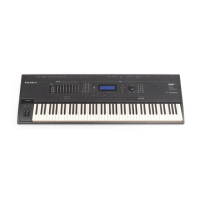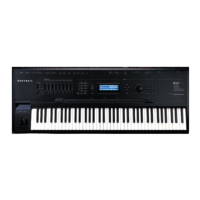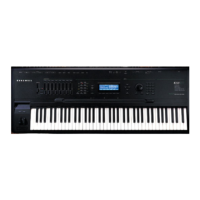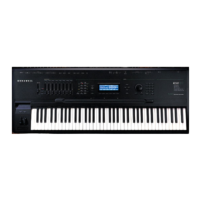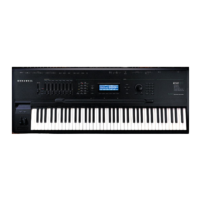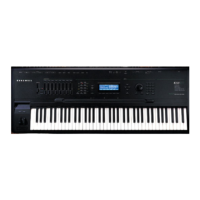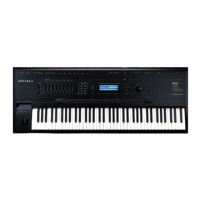DSP Functions
Non-linear Functions
14-41
Distortion (DIST)
Using this function is much like overdriving an ordinary keyboard or guitar amplifier. The
input signal is multiplied by the gain control (the combined values of the parameters on its
control input page labeled DRV, for Drive), then passes into a distortion mapper. Large Adjust
values will cause serious amounts of distortion.
Different sounds are affected differently by DIST. Waveforms that are static (waveforms with
shapes that repeat regularly and are not evolving) when they enter the DIST function will
undergo more of a timbre change than the familiar sound of distortion.
The DIST function distorts each note separately, unlike a fuzz box, which adds several notes
together then applies a uniform amount of distortion to all of them. Consequently your power
chords may sound a little different from your expectations, but you can also get some great
effects with key and velocity tracking (not to mention Sources 1 and 2!) that aren’t possible with
other distortion devices.
The page below shows the DIST function in the F1 block, but it can appear in other blocks as
well.
-1
-0.8
-0.6
-0.4
-0.2
0
0.2
0.4
0.6
0.8
1
0 50 100 150 200 250 300 350 400 450 500
Time in milliseconds
Sine followed
by DIST
DIST adjust from
-30 TO 0
Signal level
-30
-24
-18
-12
-6
0
Distorted
Sine wave
-1
-0.8
-0.6
-0.4
-0.2
0
0.2
0.4
0.6
0.8
1
0 50 100 150 200 250 300 350 400 450 500
Time in milliseconds
DIST adjust from
-30 to 0
SAW followed
by DIST
Signal level
-30
-24
-18
-12
6
0
Distorted
Sawtooth wave

